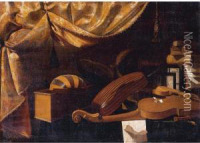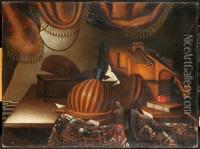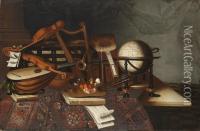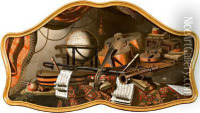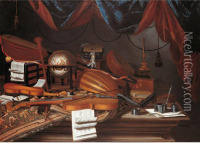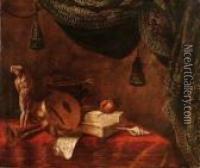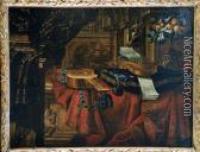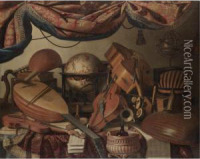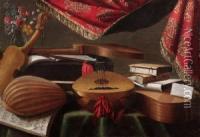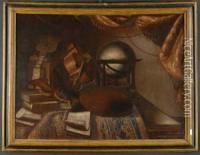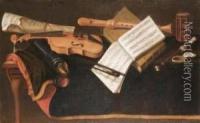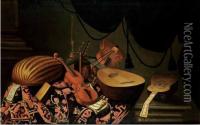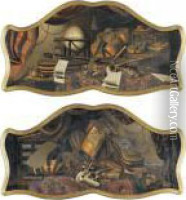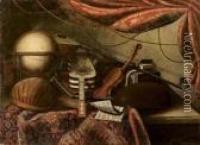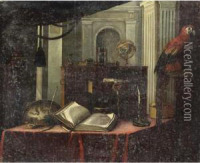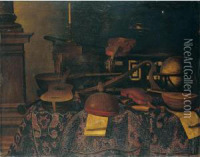Bartolomeo Bettera Paintings
Bartolomeo Bettera was an Italian painter of the Baroque era, known predominantly for his still-life paintings. He was born in 1639 in Bergamo, a city in the Lombardy region of Italy, which at the time was part of the Republic of Venice. Bettera's work is characteristic of the still life genre of his time, focusing on musical instruments, books, and scientific apparatuses, which were often arranged in a manner that suggested a narrative or symbolic intent.
Bettera's paintings are noted for their exquisite detail, rich colors, and sophisticated lighting effects. He was skilled at rendering textures and surfaces, such as the wood of stringed instruments and the crispness of paper in books and scores. His compositions often included a variety of objects that reflected the intellectual pursuits and leisure activities of the 17th century, such as globes, hourglasses, and musical scores, which spoke to the curiosity and knowledge of the period's burgeoning middle class.
Although not much is documented about his training or early career, Bettera is believed to have been influenced by Evaristo Baschenis, another Bergamese painter who was renowned for his still lifes of musical instruments. Bettera took this genre and made it his own by adding his unique touch and attention to detail.
Bettera's work did not achieve widespread fame during his lifetime, and he remained a relatively obscure figure for many years. However, his paintings have since garnered appreciation for their technical prowess and historical value. They provide a window into the cultural interests of the Italian Baroque period, particularly in the affluent circles of society.
He continued to work and live in Bergamo throughout his life, and it is there that he died in 1688. Since his death, a number of his paintings have been preserved and can be found in art collections, museums, and galleries around the world. Bettera's contributions to still life painting have been reassessed and celebrated in more recent times, and his works are studied for their beauty and historical significance in the context of 17th-century Italian art.
